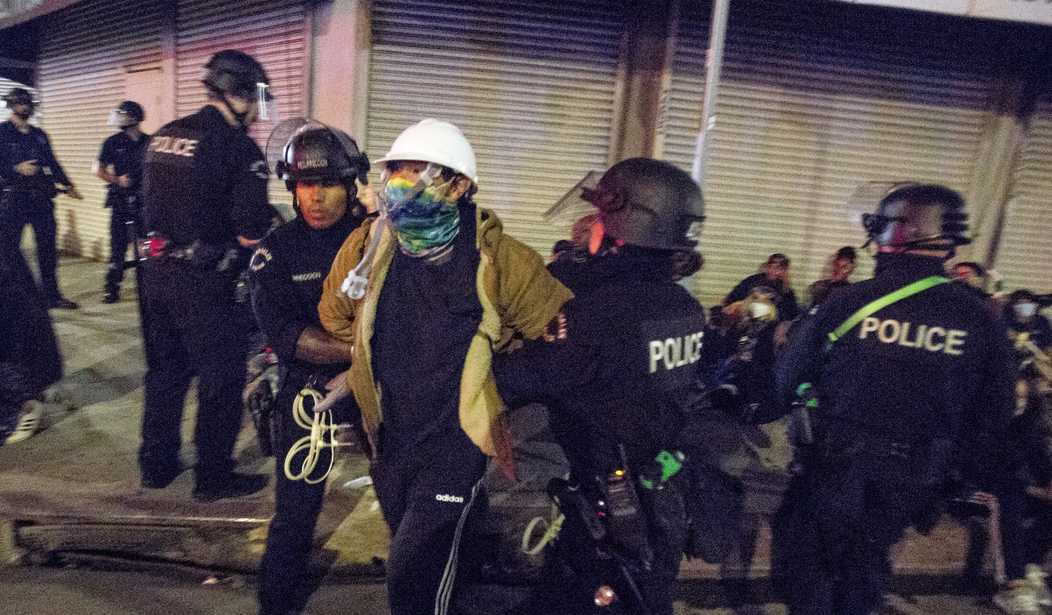An interesting exchange took place on Twitter Tuesday. It began when Los Angeles Times editor Mitchell Landsberg posted regarding recent personnel moves at the paper, which he felt would lead to “noticeable, positive changes ahead.” Responding to this, a Twitter user who goes by the handle @darkblue714 posed a question: “Will it’s [sic] policing coverage become more professional?”
Landsberg replied thus: “I would argue that it already is quite professional.” And, being a newspaperman, he couldn’t resist the temptation to pedantry. “Also,” he added, “it’s is a contraction, not a possessive. You mean its.”
Fine, it’s Twitter, where a certain amount of snark is to be expected, even from (especially from?) newspaper editors. But who among us hasn’t dashed off a tweet only to soon realize he has committed a spelling or punctuation error, or fallen victim to auto-spell?
The pedantry aside, Landsberg’s willingness to civilly engage a critic is welcome, and having so engaged, he found @darkblue714 joined by others, myself among them, who from time to time take the L.A. Times to task for what we perceive to be biased coverage of law enforcement matters. (I’ve written often on this topic; see here, here, and here for three recent examples.)
Again, credit to Landsberg for his willingness to engage with critics, but only a few hours after this exchange ended, there appeared on the L.A. Times website a story that exemplified one of the very defects we had been complaining about, to wit, the deliberate omission or distortion of data regarding crimes and arrests when discussing police stops. As has often been pointed out, the L.A. Times (like most other media outlets) persists in comparing the demographics of those stopped by the police with the city’s overall population, not with the more relevant data point, which is the city’s pool of criminal offenders.
Tuesday’s story, by Times writer Kevin Rector, concerned a proposed change to LAPD policy, one that would restrict so-called “pretext stops,” i.e., those in which officers stop someone for a minor traffic violation in order to explore what may be more serious criminal activity. “Such stops have come under intense scrutiny in recent years,” writes Rector, “particularly since The Times reported significant racial disparities in their use by the LAPD in 2019.” He goes on to write that officers assigned to Metropolitan Division “stopped Black drivers at a rate more than five times their share of the city’s population [emphasis added], and that Black and Latino drivers were stopped more often despite being less likely to have contraband on them.”
First, the ratio of people stopped by police to their share of the overall population is all but irrelevant when discussing policing strategies. As the Times acknowledges, Metropolitan Division officers are deployed to those neighborhoods where violent crime is highest, and in Los Angeles, as in any other city one can name, those neighborhoods are populated largely by blacks and Latinos. According to the Times’s own Homicide Report database, there have been 770 people feloniously killed in Los Angeles County over the last 12 months. Of these, 35 percent were black, 50 percent were Latino, 9 percent were white, and 2 percent were Asian. We know that most murders are intra-racial, thus we can conclude the suspects in these crimes largely mirror the demographics of the victims.
L.A. County’s population is about 10 million, of whom 8 percent are black, 48 percent are Latino, 25 percent are white, and 14 percent are Asian, so we can see that blacks commit murder far in excess of their share of the population, Latinos about equal to theirs, and whites and Asians less than theirs. In other words, if police stop figures precisely reflected population demographics, as the L.A. Times would seem to wish, it would be evidence that the police were derelict in their duty to address violent crime. This might serve to soothe the fevered minds of the writers and editors at the L.A. Times, but it would be a gross disservice to the law-abiding residents of those neighborhoods most burdened by murders and other violent crime.
Related: Democrats Would Prefer That You Ignore the Violent Crime
Secondly, addressing the racial disparity in the discovery of contraband, this is not the red flag of racism the L.A. Times would have you believe. Speaking as one who spent part of my LAPD career assigned to a gang unit in South Los Angeles, while we were eager to discover guns on the gang members we stopped, thereby allowing us to arrest them and avert shootings and robberies, the absence of guns was viewed as evidence of success. It was our mission to have gangsters fearful of leaving their homes while armed lest they be stopped and arrested. Pretextual stops are a valuable tool in this effort, and the denial of this tool as proposed in the LAPD policy change will only embolden those already responsible for so much of the city’s bloodshed.
Homicides in Los Angeles rose 12 percent last year and are up 54 percent from two years ago. The LAPD is already saddled with a “progressive” district attorney bent on emptying the jails and prisons. With this added restriction on what the U.S. Supreme Court has ruled is lawful police conduct, when this year ends, what is to prevent the grim toll from being even higher?










Join the conversation as a VIP Member